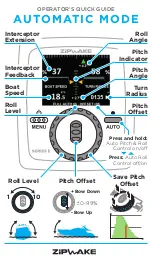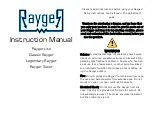
26
4. Pattern
SQ16
• Instrument Tracks (I1...I13)
They are used for creating drum sequences. Each instrument track (and hereby all notes of an instrument track) is assi-
gned exactly one note number and one MIDI channel. If you control a drum expander each instrument track triggers one
drum instrument, for example track 1: bass drum, track 2: snare and so on.
An instrument track is - as already described - assigned just a note number and a MIDI channel. It is not possible and
necessary to edit the note numbers for each step of an instrument track. How you make those assignments and how to
control the velocity for single steps is described in section 4.2.1.
• Note tracks (n14...n16)
As you can see from the picture note tracks differ insofar as they contain different note numbers (or no notes at all) per
track. They are used to play back simple (monophonic) melodies. As with instrument tracks, each note track uses one
single MIDI channel.
There exist two different methods to input notes into a note track:
• Recording notes from an external MIDI keyboard (see section 11)
• Manual input and editing of single notes
How to edit a note track, how to assign a MIDI channel to it and how to control its velocity is described in section 4.3.1.
4.1.3. Creating a Pattern - Playing back a Pattern
Creating a pattern rhythm
According to section 4.1.2 all steps of an instrument track contain the same note number while all steps of a note track can
contain various notes or no note at all. You can create different rhythms by enabling several steps and disabling other steps
per track.
To accomplish this there's a separate On/Off track for each Pattern track in which you can turn on and off single steps.
Example
The instrument track I1 outputs notes only on steps 1, 5, 9 and 13; the note track n14 only on steps 1, 3, 4 and 11.
Содержание SQ16
Страница 1: ...Owners Manual SQ16 ...
















































